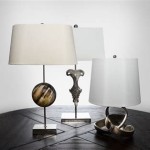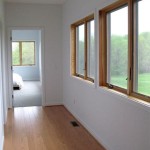Essential Aspects of Interior Design Color Combinations
Color is a powerful tool in interior design, capable of transforming the atmosphere and evoking various emotions. Understanding the principles of color combinations is crucial for creating harmonious and visually appealing spaces. Here are some essential aspects to consider:
Color Wheel and Theory: The color wheel is a valuable resource for understanding color relationships. It consists of 12 hues, including primary (red, blue, yellow), secondary (orange, green, violet), and tertiary (yellow-orange, red-orange, etc.). By studying the wheel, designers can identify complementary colors (opposite each other on the wheel), analogous colors (adjacent to each other on the wheel), and triadic colors (equally spaced on the wheel).
Color Psychology: Different colors elicit specific emotions and associations. Warm colors (red, orange, yellow) are often associated with energy, excitement, and warmth, while cool colors (green, blue, violet) are often associated with calmness, serenity, and stability. Understanding the psychological effects of colors is crucial for creating spaces that align with the desired ambiance.
Value and Saturation: Value refers to the lightness or darkness of a color, while saturation refers to its intensity. Combining colors with different values and saturations can create depth, contrast, and visual interest. For example, a neutral base color with saturated accent colors can create a bold and dynamic statement.
Color Harmony: Achieving color harmony is essential for a cohesive design scheme. There are several color harmony formulas to guide designers, such as monochromatic (using different shades of the same color), analogous (using colors adjacent on the wheel), and complementary (using colors opposite on the wheel). Experimenting with different harmonies can create diverse effects, from subtle and soothing to bold and eye-catching.
Space and Light: The size and lighting conditions of a space significantly impact color selection. A small room with limited natural light may require lighter and brighter colors to create a sense of spaciousness, while a larger room with ample light can handle darker and more saturated colors. Consider the specific characteristics of the space when choosing a color palette.
Style and Context: The overall design style and context of the interior should inform the color combinations. For instance, a traditional interior may call for muted and earthy tones, while a modern space may benefit from bold and contrasting colors. Consider the existing furnishings, artwork, and architectural features to ensure a seamless integration of colors.

20 Best Modern Home Color Palettes Room Combinations Offeo Interior House Colors Combination Palette Living

Color Palette For Home 12 Combos Designers Love Havenly Interior Design Blog

How To Choose The Colour Palette For Your Project Alma De Luce

Color Palette Interior Ideas Balance Bedroom Bedroomcolor Design Schemes

Color Palette For Home 12 Combos Designers Love Havenly Interior Design Blog

Palette For Interior Design Color Ideas

Color Palette For Home 12 Combos Designers Love Havenly Interior Design Blog

9 Design Ideas For Your Home To Achieve A Green Colour Palette Nippon Paint Singapore
What Are The Best Color Theories Of Interior Decorating Quora

Interior Design Color Schemes That Fit Your Personality Atlanta S Paint Doctor Residential Commercial Painting








